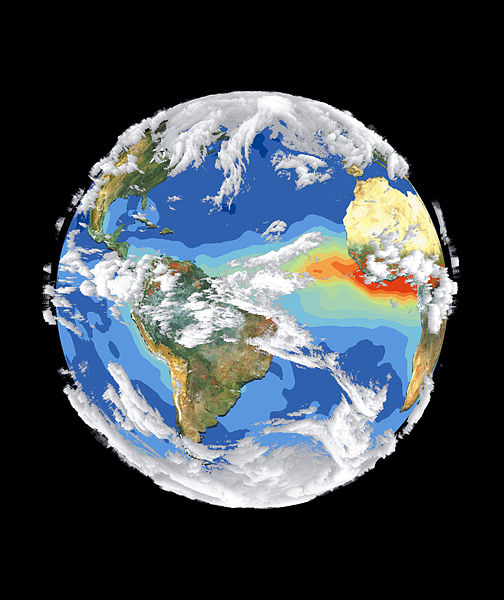
© NASA
at CERN By Sebastian Lüning and Fritz Vahrenholt
On May 10, 2013, at the online Austrian ORF, there was
a rare interview with the CLOUD Experiment director of the European Organization for Nuclear Research, Jasper Kirkby. Within the scope of the CLOUD project, it is being investigated to what extent solar activity has on cloud formation via the mechanism of cosmic radiation and the impact this could have on the Earth's climate (see Chapter 6 of our book
Die kalte Sonne).
Here's an excerpt of the worthwhile interview:
ORF: What is the relationship between solar activity and cosmic radiation?Kirkby: Cosmic radiation consists of high energy, charged particles. When they reach our solar system, they are deflected away by the magnetic field of the sun. Foremost by the magnetic field of the solar plasma. When the sun is active, less cosmic radiation reaches the Earth. The relationship to the solar cycle: When there are many sunspots, the Earth receives 10 - 30% less cosmic radiation.
Is this relationship sure?Yes, it is solidly confirmed. We also know that cosmic radiation ionizes every cubic centimeter of the Earth's atmosphere. Unsure so far is whether or not this also could have a climatic impact. Clouds are extremely important for the Earth's climate. If I could magically eliminate all clouds from the atmosphere, then 30 watts of additional heat energy would reach every square meter of the Earth.
To put this number into context: The warming of the atmosphere through the impacts of man is currently pegged at 1.5 watts per square meter. Small variations in cloud cover could have large impacts.
What do your experiments show?At this point in time we cannot say if cosmic radiation impacts the climate. So far up to now we have investigated the production of condensation nuclei for cloud droplets - particularly those that are formed from gas, i.e. gas-to-particle-conversion". They represent about half of the condensation nuclei in the atmosphere. The remaining nuclei come from soot and dust.
What gases are involved in this process?We have looked at sulfuric acid and ammonia. The results of the first trials: Cosmic radiation enhances the formation of condensation nuclei from gases by a factor of 10. But that alone is too little to have a significant impact on cloud formation. According to our latest experiments, there has to be another gas or vapor involved that enhances this process. We suspect organic substances.
Which ones?The results are currently being reviewed by a journal. Unfortunately I can't tell you more. Only this much: The results are very interesting. Over the course of the year there are going to be some publications on the subject.
Let's assume that you are able to show that cosmic radiation indeed does contribute a lot to cloud formation. What would that mean?I think that the experiments are important in two ways. Firstly, they would show that there is a natural source to climate change. And the other point is that it would change our understanding of anthropogenic climate change. We know quite a bit about greenhouse gases. What we know little about are aerosols. These are particles that come from industry floating in the atmosphere. They surely have a cooling effect. However, we have no idea just how great this effect is. It may be small, but it may be very big. Maybe it is even big enough to offset the additional CO2 in the atmosphere.. We don't know.
Continue reading at
Science@ORF.at.
Reader Comments
to our Newsletter